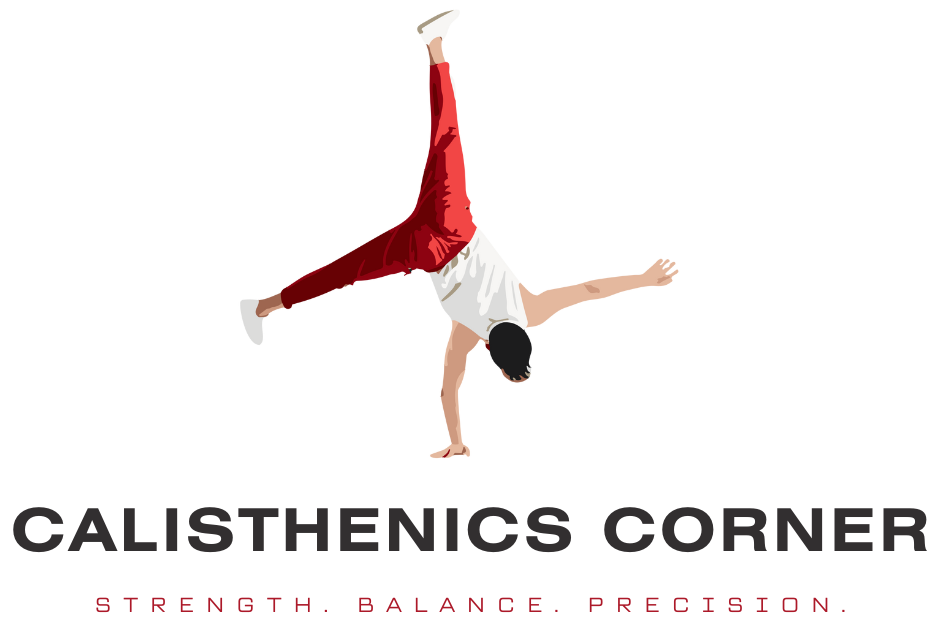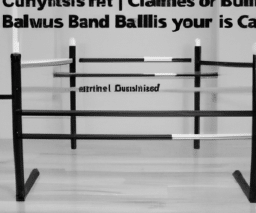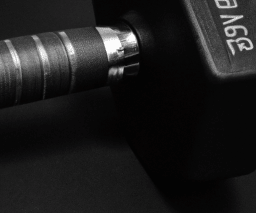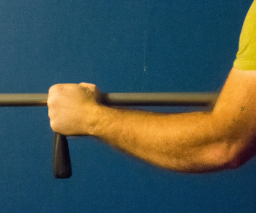Imagine a world where the only thing you needed to get stronger was your own body. No fancy gym equipment, no expensive weights, just you and gravity. It may sound too good to be true, but this is the promise that calisthenics holds. A form of exercise that focuses on using your own body weight, calisthenics has been gaining popularity in recent years. But does it really have the power to make you stronger than traditional weightlifting? In this article, we will explore the benefits of calisthenics and see if it truly lives up to its reputation as the ultimate strength-building workout.
Benefits of Calisthenics
Full-body workout
One of the key benefits of calisthenics is that it provides a comprehensive full-body workout. Unlike weightlifting, which often focuses on targeting specific muscle groups, calisthenics movements engage multiple muscles at once. By performing exercises like push-ups, squats, and lunges, you can work your arms, chest, back, core, and legs all in one session. This not only saves time but also ensures that no muscle group is neglected, resulting in a balanced and functional physique.
Improves flexibility
Another advantage of incorporating calisthenics into your fitness routine is the significant improvement in flexibility it can offer. By performing bodyweight exercises that require a wide range of motion, such as yoga poses or dynamic stretches, you can increase the flexibility and mobility of your joints and muscles. This improved range of motion can help reduce the risk of injuries and enhance your overall athletic performance, whether in sports or everyday activities.
Increased body control
Calisthenics also focuses on developing body control and coordination. Through exercises like handstands, pistol squats, and planches, you can enhance your proprioception and kinesthetic awareness. Proprioception refers to the body’s ability to sense its position, movement, and force within its environment, while kinesthetic awareness is the ability to control and coordinate movements. By regularly practicing calisthenics, you can fine-tune these skills, leading to better movement quality and overall body control.
Benefits of Weightlifting
Targets specific muscle groups
One significant benefit that weightlifting offers is the ability to target specific muscle groups. By using free weights, machines, or resistance bands, you can isolate and work on specific muscles to develop strength and muscle size. This targeted approach is particularly beneficial for individuals looking to address muscle imbalances or focus on specific areas of their body. Whether it’s building bigger biceps, toning your glutes, or strengthening your back muscles, weightlifting allows you to zero in on specific muscle groups.
Builds muscle mass
Weightlifting is well-known for its ability to build muscle mass. By consistently challenging your muscles with progressively heavier weights, you create micro-tears in the muscle fibers that, when repaired, lead to muscle growth and increased muscle size. This process, known as hypertrophy, requires a combination of sufficient protein intake, proper rest, and progressive overload. If your goal is to build a more muscular physique, weightlifting is an effective way to stimulate muscle growth.
Increased bone density
Weightlifting can also have a positive impact on bone health. When you lift weights, the stress placed on your bones triggers them to become stronger and denser over time. This is particularly important for individuals at risk of osteoporosis, a condition characterized by low bone density and increased risk of fractures. By engaging in weightlifting exercises, you can help maintain or even increase your bone density, reducing the likelihood of fractures and maintaining strong skeletal health.
Comparison of Calisthenics and Weightlifting
Exercise versatility
When comparing calisthenics and weightlifting, one aspect to consider is exercise versatility. Calisthenics offers a wide range of exercises that can be performed using only your body weight, including push-ups, squats, pull-ups, and planks. These exercises can be done anywhere without the need for specialized equipment, making them highly accessible. On the other hand, weightlifting provides a greater variety of exercises, utilizing equipment such as barbells, dumbbells, and machines. This variety allows for more specific muscle targeting and progression, making weightlifting suitable for those looking to choose exercises based on their individual goals.
Resistance level
When it comes to resistance level, weightlifting has the advantage. By utilizing external weights, such as barbells or dumbbells, weightlifting allows for greater control over the resistance applied to the muscles. This ability to adjust the weight and manipulate the load allows for progressive overload, which is crucial for muscle growth and strength development. In contrast, calisthenics primarily relies on body weight as resistance, which may be limiting for individuals who have already developed significant strength and need more challenging levels of resistance.
Muscle activation
Both calisthenics and weightlifting can effectively activate the muscles, but they do so in different ways. Calisthenics exercises often involve compound movements, which engage multiple muscle groups simultaneously, resulting in a more comprehensive workout. Conversely, weightlifting exercises can be more isolated, allowing for targeted muscle activation. Depending on your training goals, you can choose between these two approaches. If you prefer working on overall body strength and coordination, calisthenics may be a better fit. However, if you’re looking to focus on building specific muscle groups or improving strength in a particular area, weightlifting can offer targeted muscle activation.
Calisthenics vs Weightlifting for Strength
Increasing overall strength
Both calisthenics and weightlifting have the potential to increase overall strength, but they do so in slightly different ways. Calisthenics relies on bodyweight movements that require control and coordination, such as pull-ups, push-ups, and handstands, to develop functional strength. These exercises train your body to move as a cohesive unit, enhancing your overall body strength. Weightlifting, on the other hand, allows for progressive overload by constantly challenging muscle groups with increasing weights, resulting in increased strength specifically in the targeted muscles. Ultimately, the choice between calisthenics and weightlifting for overall strength depends on personal preference and training goals.
Building muscle mass
If your goal is to build muscle mass, weightlifting tends to be more effective than calisthenics due to its ability to provide greater resistance and the resulting stimulus for muscle growth. By lifting heavier weights and gradually increasing the load, weightlifting triggers hypertrophy, leading to muscle growth and an increase in muscle size. While calisthenics can still contribute to muscle growth, especially for beginners or individuals with lower strength levels, it may be more challenging to reach the same level of muscle hypertrophy that weightlifting can offer.
Achieving functional strength
Functional strength refers to the ability to apply strength to perform real-life movements and tasks effectively. Calisthenics exercises, with their focus on bodyweight movements and control, are often seen as a better way to develop functional strength. By training your body to move dynamically and in various planes of motion, calisthenics can improve your core stability, balance, and overall coordination, making daily activities easier and reducing the risk of injuries. While weightlifting can also contribute to functional strength, calisthenics’ emphasis on body control and movement quality may be more directly applicable to everyday movements.
Differences in Training Approach
Equipment and cost
Calisthenics has a distinct advantage over weightlifting when it comes to equipment and cost. With calisthenics, all you need is your own body weight, making it a highly accessible and cost-effective form of exercise. Whether you’re at home, in a park, or on vacation, you can perform calisthenics exercises without the need for specialized equipment. Weightlifting, on the other hand, typically requires access to a gym or home gym setup with weights, barbells, machines, and benches. This can involve a higher upfront cost and ongoing gym membership fees, depending on your approach to weightlifting.
Time commitment
Calisthenics typically requires less time commitment compared to weightlifting. Since bodyweight exercises can often be performed in quick and efficient circuits, calisthenics workouts can be completed in a relatively short amount of time. This makes calisthenics a viable option for individuals with limited time or those who prefer shorter, intense workouts. Weightlifting, on the other hand, often involves longer sessions, especially if you incorporate multiple exercises targeting specific muscle groups. However, the duration of your workouts will ultimately depend on your training program, goals, and personal preferences.
Progression and scalability
The progression and scalability in calisthenics and weightlifting differ due to the nature of the exercises. In calisthenics, progression often involves mastering more challenging variations of bodyweight exercises. For example, once you can perform regular push-ups with ease, you can progress to more difficult variations like single-arm push-ups or planche push-ups. This gradual progression allows you to continually challenge your muscles and progress in your strength and skill level. Weightlifting, on the other hand, primarily involves increasing the weight lifted over time, allowing for a progressive overload. By incrementally adding weights to your lifts, you can continue to challenge your muscles and stimulate strength gains.
Training Goals
Toning and definition
If your goal is to achieve a toned and defined physique, both calisthenics and weightlifting can help you get there. Calisthenics, with its focus on bodyweight movements and higher repetitions, can help build lean muscle and burn excess fat, resulting in a more toned appearance. By incorporating exercises like planks, mountain climbers, and burpees, you can engage multiple muscle groups and increase your overall calorie burn. On the other hand, weightlifting, particularly with a focus on compound exercises like squats, deadlifts, and bench presses, can contribute to increased muscle mass and definition. The combination of muscle growth and reduced body fat percentage achieved through weightlifting can result in a more defined and sculpted physique.
Power and explosiveness
For individuals seeking to improve power and explosiveness, both calisthenics and weightlifting have their benefits. Calisthenics exercises that involve explosive movements, such as plyometric jumps or explosive push-ups, can help develop fast-twitch muscle fibers and enhance explosive power. These exercises focus on generating maximum force in a short amount of time, translating well into sports and activities that require quick bursts of power. Weightlifting exercises, particularly Olympic weightlifting movements like the snatch and clean and jerk, also emphasize explosiveness and power production. By performing these lifts explosively, you can improve your ability to generate force rapidly and enhance your overall power.
Muscle hypertrophy
If your main goal is to maximize muscle hypertrophy and build significant muscle mass, weightlifting is generally considered more effective than calisthenics. The ability to progressively overload the muscles through increasing weights and adjusting the load is crucial for stimulating muscle growth. Weightlifting exercises, such as squats, deadlifts, and bench presses, target large muscle groups and provide a greater stimulus for hypertrophy. Calisthenics, although effective for beginners or individuals with lower strength levels, may be more limited in providing the necessary resistance for significant muscle hypertrophy. However, it is important to note that with proper programming, calisthenics can still contribute to muscle growth and definition, particularly for beginners.
Considerations for Beginners
Safety and injury prevention
For beginners, safety and injury prevention should be a top priority. Both calisthenics and weightlifting carry a certain degree of risk if performed incorrectly or with poor form. It is crucial to learn proper technique and seek guidance from a qualified trainer or training resource when starting out. Calisthenics, with its focus on bodyweight movements, may be initially perceived as safer due to the lack of external weights. However, exercises like handstands or advanced gymnastic movements require proper progression and strength development to reduce the risk of injury. Weightlifting, on the other hand, carries its own safety considerations, particularly with heavier loads. Learning and practicing proper form, understanding the principles of progressive overload, and listening to your body are essential for injury prevention in both calisthenics and weightlifting.
Starting with bodyweight exercises
For beginners, starting with bodyweight exercises in calisthenics can be an excellent way to establish a foundation of strength, body control, and coordination. By mastering basic movements like push-ups, squats, lunges, and planks, you can build core strength and prepare your body for more advanced calisthenics exercises. Starting with bodyweight exercises also allows you to focus on proper form and technique before progressing to more challenging variations. Weightlifting beginners can also benefit from incorporating bodyweight exercises as part of their warm-up or accessory work to enhance stability, mobility, and overall strength.
Gradual progression
Regardless of whether you choose calisthenics or weightlifting, gradual progression is key for beginners. It’s important to start with exercises and weights that are appropriate for your current strength level and gradually increase the intensity and difficulty over time. This gradual progression allows your muscles, joints, and connective tissues to adapt and reduce the risk of injury. Both calisthenics and weightlifting offer a wide range of progressions and variations that can be utilized as you become more proficient and stronger. Patience and consistency are key when starting out, and gradually challenging yourself will yield better long-term results.
Training Variation and Combination
Incorporating both calisthenics and weightlifting
In some cases, individuals may choose to incorporate both calisthenics and weightlifting into their training routine to reap the benefits of both approaches. This combination allows for increased exercise variety and a more well-rounded training program. By incorporating calisthenics exercises alongside weightlifting, you can continue to develop functional strength, flexibility, and body control while also targeting specific muscle groups and stimulating hypertrophy. This balance between calisthenics and weightlifting can provide a comprehensive training routine that enhances overall fitness and prevents plateauing by constantly challenging the body in different ways.
Alternating between bodyweight and weighted exercises
Another approach is to alternate between focused calisthenics workouts and weightlifting sessions. This allows for dedicated periods of time to focus on different training goals while still incorporating elements of both calisthenics and weightlifting. For example, you can have a calisthenics-based workout that primarily focuses on bodyweight movements and functional strength one day, and on another day, switch to a weightlifting session targeting specific muscle groups for hypertrophy. This variation can keep your workouts engaging and prevent boredom, while also allowing for adequate recovery and preventing overtraining.
Supplementing exercises with weights in calisthenics
For those who primarily enjoy calisthenics but still want to incorporate the benefits of weights, it is possible to supplement certain exercises with external weights. This approach allows you to combine the advantages of bodyweight movements with the added resistance of weights. For example, you can add a weighted vest or hold dumbbells during squats, lunges, or push-ups to increase the resistance and further challenge your muscles. By selectively incorporating weights into your calisthenics routine, you can tailor your training to suit your preferences and goals while enjoying the versatility of calisthenics.
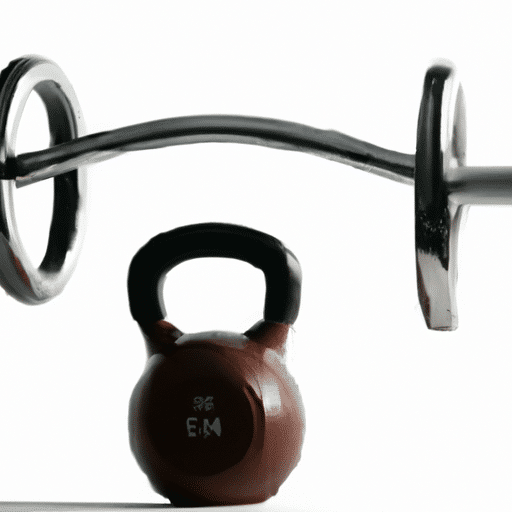
Personal Preference and Enjoyment
Individual preferences
Ultimately, the choice between calisthenics and weightlifting may come down to personal preferences. Some individuals may prefer the simplicity and accessibility of calisthenics, while others enjoy the challenge of lifting heavy weights in a gym setting. Your preference may depend on factors such as your personality, fitness goals, exercise experience, and access to equipment. Experimenting with both calisthenics and weightlifting can help you determine which approach resonates more with your individual preferences and inclinations.
Long-term adherence
Consistency and adherence to a workout routine are crucial for long-term success. When considering calisthenics versus weightlifting, it’s important to choose a training approach that you enjoy and find sustainable in the long run. If you don’t enjoy or look forward to your workouts, it can be challenging to maintain consistency over time. Some individuals find calisthenics more enjoyable due to the freedom of movement and the ability to train outside or in various environments. Others may prefer the structured nature of weightlifting and the sense of progress achieved through lifting progressively heavier weights. Finding a training style that you genuinely enjoy and can see yourself sticking to in the long term is essential for creating a sustainable fitness routine.
Enjoying the workout routine
Enjoyment is a significant factor when it comes to maintaining motivation and staying committed to your fitness goals. Both calisthenics and weightlifting offer unique experiences and challenges, and what you find enjoyable may differ from others. Calisthenics can be appealing for its versatility, creativity, and freedom of movement, allowing individuals to explore various bodyweight exercises and progressions. Weightlifting, on the other hand, can be satisfying for its measurable progress, the feeling of lifting heavy weights, and the invigorating sense of challenge. The key is to find a workout routine that brings you joy, keeps you engaged, and makes you excited to exercise regularly.
Conclusion
When it comes to the debate between calisthenics and weightlifting, there is no definitive answer. Both training approaches offer unique benefits and can contribute to overall strength, muscle development, and fitness. The decision ultimately rests on individual preferences, goals, and circumstances. It’s essential to consider factors such as exercise versatility, resistance level, muscle activation, equipment availability, time commitment, progression, training goals, safety considerations, and personal satisfaction. Recognizing and respecting individual differences is key. For some, a combination of calisthenics and weightlifting may provide the best of both worlds, allowing for a versatile and balanced training approach. By finding a balanced approach that aligns with your goals, preferences, and long-term commitment, you can create a sustainable workout routine that brings you closer to achieving your desired fitness outcomes.
